
Magnolias: planting, pruning and care
Contents
Magnolias in a nutshell
- They are the oldest flowering trees
- Deciduous or evergreen, their abundant flowering is unforgettable
- Hardy, they withstand intense cold and urban pollution
- They thrive in full sun or partial shade in gardens of all sizes
- Of slow growth, they can also be grown in pots
A word from our expert
Magnolias for ever! Magnolias are trees with a often spectacular and generous early flowering that have inspired some artists! In spring and summer, their flowers with large, delicately scented petals open in flared tulips or stars ranging from pure white to pinkish white and almost black purple depending on the varieties.
There are two main types of magnolias: Deciduous Magnolias, such as the Soulanges Magnolia or Magnolia soulangeana which bloom in early spring and are well suited to small gardens, and Evergreen Magnolias, like the Magnolia grandiflora with summer flowering.
Whether they are small bushes 2.5 m to 5 m tall or large trees 10 to 20 m tall, their always graceful appearance fits all garden sizes, from the smallest to vast parks. Their versatile nature and resistance to pollution make them essential in city gardens.
Unmissable in spring scenes, they find their place in natural gardens, surrounded by spring bulbs; daffodils, botanical tulips…
Stunning when isolated in a strategic spot in the garden to enjoy their exuberant flowering, in a flowering hedge or in a large mass alongside heather soil shrubs like Rhododendrons and Camellias, smaller Magnolias like M. stellata can also be grown in pots on a terrace.
Easy to grow in sun or partial shade, sheltered from cold, dry winds, in fresh, humus-rich soil, with a neutral or acidic tendency, they also offer good hardiness, making them low-maintenance regarding climate.
Maintenance, planting, and pruning, here are our tips for successfully growing your magnolias, these magnificent flowering trees. From Magnolia grandiflora to deciduous magnolias, discover our splendid collection of magnolias at all prices.
Description and Botany
Botanical data
- Latin name Magnolia
- Family Magnoliaceae
- Common name Magnolia
- Flowering from March to September
- Height 2 to 25 m
- Exposure Sun, partial shade
- Soil type Neutral, acidic, well-drained
- Hardiness -15°C to -25°C depending on the species
The genus Magnolia comprises around 125 species of trees and bushes with deciduous or evergreen foliage, growing spontaneously in the forests, bushes, and along the rivers of Asia and North America, extending to the subtropical regions of South and Central America. Magnolias have widely acclimatised in our gardens and are among the few ornamental bushes that can withstand urban air pollution.
The Bigleaf Magnolia or Magnolia grandiflora is the most famous and largest member of the Magnoliaceae family, which is divided into two types of magnolias: the deciduous Magnolias from Asia, such as the Saucer Magnolia or Magnolia soulangeana, which flower in early spring, before the leaves appear, and the evergreen Magnolias from America, which have summer flowering, like Magnolia grandiflora with its large tulip-shaped flowers.
The size of magnolias varies according to species and varieties. Some have a small growth (M.stellata, M (x) loebeneri) and do not exceed 3 metres in height, making them perfect for small gardens and large pots. Those with medium growth measure between 3 and 5 metres, while large trees like Magnolia grandiflora can reach 30 m in height in their natural habitat.
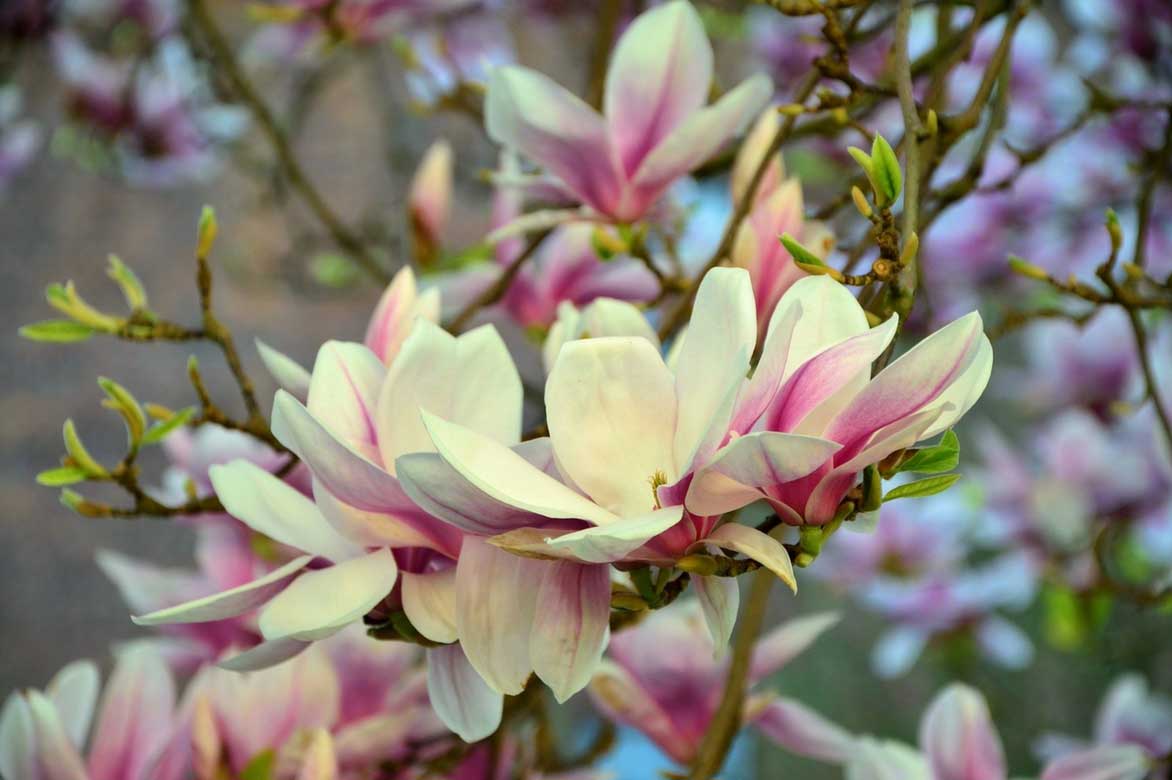
Here, the Magnolia soulangeana whose flowers bloom in spring on the still bare branches
Their growth varies by variety and can be slow, especially in the first years after planting, but it is matched only by their longevity of centuries. Moreover, the older the magnolias get, the more they bloom abundantly. Growth may then sometimes slow down to the point of appearing stagnant. The root system is shallow, often flat except in larger species, and often spreading.
Magnolias form graceful branched trees with a naturally rounded shape and a more or less spreading and airy habit, upright or even pyramidal. Often taller than wide, they frequently exhibit a bushy habit with a beautifully balanced, light branching from the base. Some only grow on a single trunk.
The magnolia is one of the oldest flowering trees. Whether deciduous or evergreen, all present in spring or summer, a sumptuous flowering in the shape of tulips or starry showers that covers the entire plant.
Most deciduous species flower early, sometimes just as winter ends, while those with evergreen foliage have summer flowering; the large solitary ‘goblet’ flowers, resembling tulips, appear from June to September.
Some specimens like Magnolia grandiflora will take several years to flower, sometimes 5 years or more, while others like Magnolia x stellata ‘Gold Star’ will flower in the first years after planting.
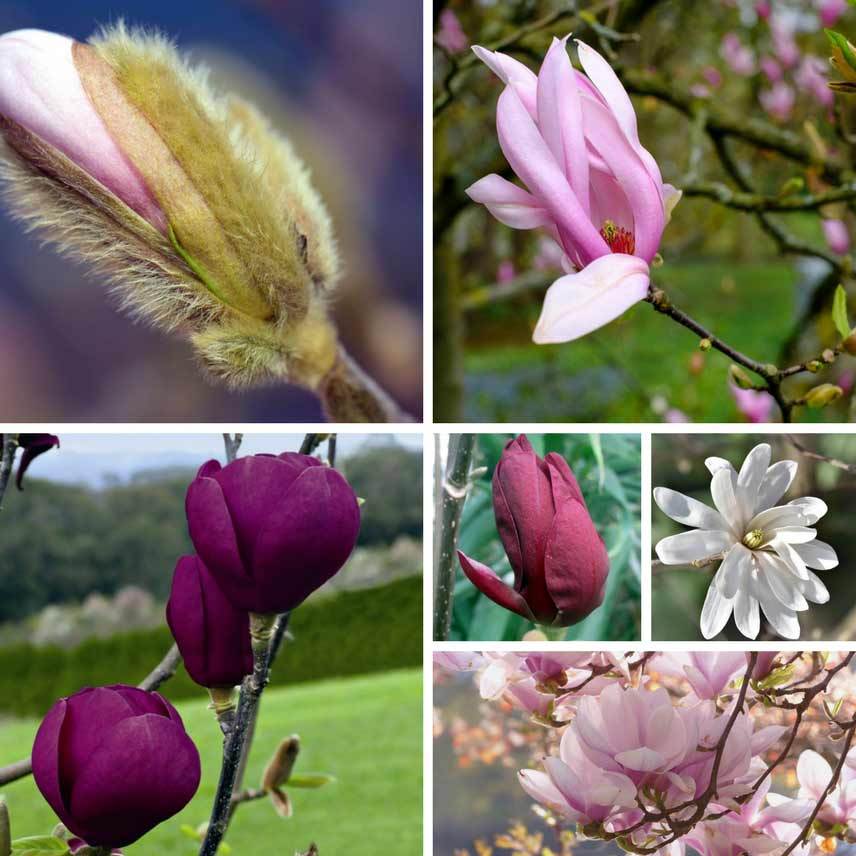
Above: Magnolia soulangeana Below, from left to right: Magnolia ‘Black Tulip’ – Magnolia ‘Genie’ – Magnolia stellata – Magnolia ‘Heaven Scent’
Deciduous magnolias, extremely floriferous, like Magnolia x soulangeana, are appreciated for their early flowering. They offer a breathtaking spectacle in spring that makes one forget the long winter months. Their dark, still bare wood is covered from March for the earliest ones, with a outpouring of immense flowers that jostle and succeed each other at the tips of the branches, until May. Large brown velvet buds precede the flowering.
Solitary, the flowers, which appear fragile, then bloom, often before the leaves, and range from pure white, pinkish or purplish, to pink, cream yellow, yellowish green, wine red, and even dark purple approaching black like ‘Black Tulip’. These tulips or flared cups in pink-flowered magnolias display pretty shades of a wine tone or pink tinged with a deeper red on the reverse and at the base of the petals. Some bloom in even more nuanced corollas, as seen in Magnolia brooklynensis ‘Eva Maria’ or in Magnolia soulangeana ‘Rustica Rubra’, giving the flowers a remarkable specificity.
Depending on the varieties, the shape of the flowers differs; upright goblet-shaped in Magnolia (x) soulangeana or sprengeri, sometimes pendulous in Magnolia wilsonii or horizontal in M. sieboldii, elongated in narrow tulips reminiscent of the fleur-de-lis in Magnolia liliflora or M. ‘Susan’, or star-shaped in M. stellata or star magnolia.
Some flowers may present intermediate shapes in cups with petals more or less flared and incurved, resembling those of a peony or even a water lily.
The flowers of magnolias are the very first prehistoric flowers that appeared 100 million years ago; from an evolutionary perspective, their spiral structure, of extreme simplicity, comparable to a screw, is one of the most primitive.
The flowers, with corollas ranging from 5 cm to 30 cm in diameter, consist of six to 30 petals that are more or less narrow, often with a waxy and thick texture. They reveal in their heart a bouquet of yellow or pink stamens surrounding a more or less prominent pistil, sometimes resembling a granular club.
Some exude a light lemon citrus fragrance or a more pronounced exotic fruit scent in evergreen magnolias.
The flowers then give way to large cone-shaped fruits, containing red-orange inner seeds, which are very decorative in early autumn.
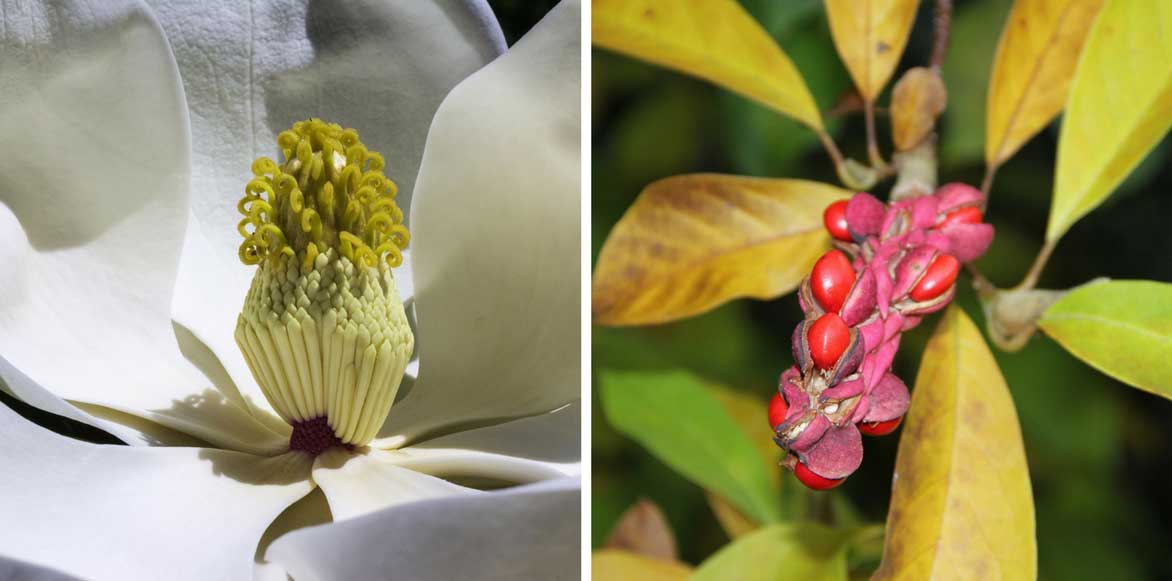
The prominent pistil of Magnolia grandiflora and the bright red fruits in autumn
Magnolias present large leathery leaves that are deciduous or remain evergreen depending on the species and sometimes the climate. The foliage is quite lush, ranging from light green to dark green, glossy or matte, composed of entire alternate leaves, oval or elliptical, measuring 8 to 40 cm with more or less pronounced veins. Some turn yellow-brown in autumn before falling. They sometimes have a paler and fuzzy underside and emit a delicate lemon fragrance.
The Magnolia macrophylla and the Magnolia tripetala or Parasol Magnolia are exceptional; it is not their flowers but their very large deciduous leaves measuring up to 80 cm in length that attract attention, giving them a particularly interesting exotic appearance.
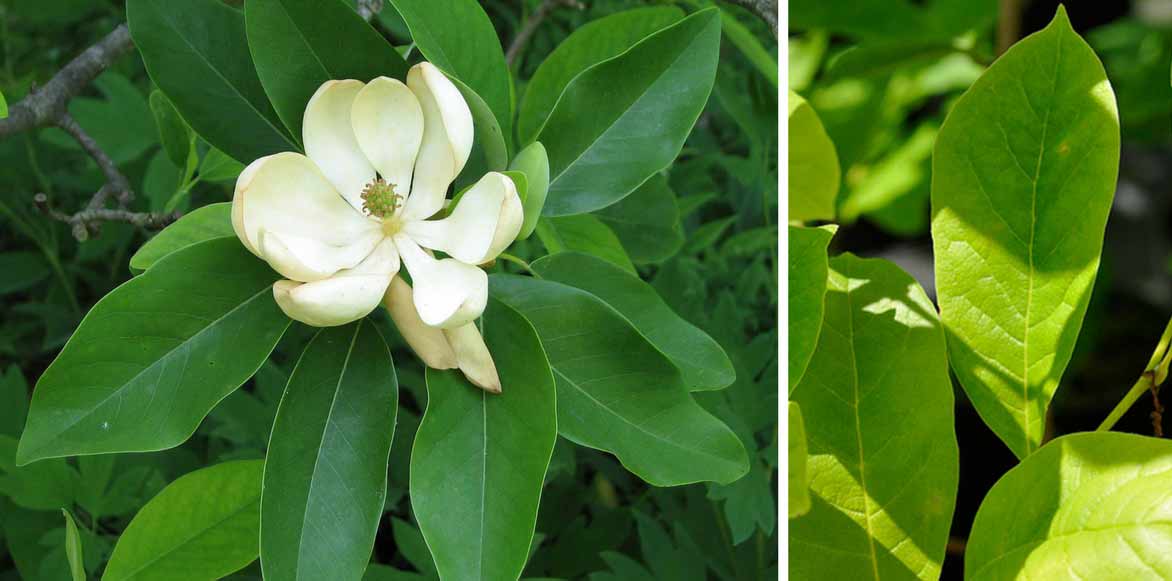
The original foliage, green on top, silver underneath of Magnolia virginiana Glauca and the leathery leaves of Magnolia stellata
Most magnolias withstand harsh winters and resist from -15°C to -20°C-25°C, depending on the species. There are some species that are slightly less hardy. They should be sheltered from cold winds and late frosts that can damage their early flowering.
They prefer sunny to partially shaded exposure and a neutral or acidic soil, rich in humus, well-drained, and cool, retaining moisture during the summer heat. Apart from a few species like magnolia kobus that tolerate slightly calcareous soil, they will thrive in soil without excessive lime.
Magnolias are splendid as solitary specimens, as a focal point in the garden to enjoy their spectacular flowering, in flowering hedges with viburnums, or in large groups with quince and forsythias, alongside heather soil shrubs like Rhododendrons and Camellias or perennials like clematis or foxgloves. Their compact size and slow growth suit all garden sizes, even small ones; some can also be planted against a wall. Magnolias can also be grown in pots on a terrace.
They are also often used to create Japanese gardens in association with Japanese maples, azaleas, Nandina.
In spring, surround them with a carpet of early flowers and bulbs, lungworts, daffodils, erythroniums, primroses, or tulips.
The bark of magnolias, aromatic when young, has medicinal properties and is used in cosmetics, just like the lemon-scented flowers that are used in the making of perfumes and essential oils.
The wood of magnolia, precious and durable, was once overexploited for furniture making, particularly in the southeastern United States.
Although magnolias have existed since prehistoric times, their introduction to Europe only dates back to the 18th century. It was in 1711 that the very first magnolia was brought to France, from the Breton port of Paimboeuf, and then transported to Nantes after a long journey by sailing ship from the New World. According to the story, more than 20 years passed before the shrub, once called “tulip laurel,” began to flower!
It was in 1764 that it was identified by a botanist from Nantes under the name of “magnolia grandiflora.” The propagation of this remarkable tree by layering has since ensured a beautiful lineage. Since 1992, it is naturally in Nantes that the National Reference Collection of magnolias is preserved, housing more than 330 varieties planted at the Beaujoire Floral Park.
Species and varieties
There are 125 species of Magnolias, about 80 of which are well acclimatised to our latitudes. They include trees (up to 20 m tall in evergreen species) as well as bush varieties (approximately 2 to 8 m).
All magnolias possess excellent hardiness and offer a generous flowering, whether in spring or summer, ranging from deep pink to pure white and yellow, resembling tulips or star-shaped flowers, and emitting a subtle lemony fragrance that can vary in intensity.
The most well-known and cultivated are:
- the magnolia soulangeana magnificent in spring with its immense pink flowers reaching about 6-8 m. The numerous cultivars of Magnolia x soulangeana range from pure white to very dark purple-pink, as seen in ‘Rustica Rubra’.
- the Magnolia grandiflora, a summer magnolia valued for its beautiful, leathery evergreen foliage all year round. It is the giant of the family: it can become a tree and grow over 20 m, making it suitable only for large gardens. It has given rise to many often lesser-known hybrids. ‘Galissonnière’ is its most common cultivar, featuring immense, highly fragrant white flowers.
There are more compact varieties, perfect for small gardens such as Magnolia stellata, which is one of the smallest and hardiest in the category, with its delicate small star-shaped flowers that grow slowly and do not exceed 3 m in height, along with many hybrids.
There is also the early Magnolia denudata or Magnolia denudata, a small tree (5 to 10 m tall) with a spreading habit, whose flowers open in March when the tree is still bare, without leaves.
You can even find yellow varieties, such as Magnolia ‘Elisabeth’, a beautiful hybrid resulting from the cross-breeding of Magnolia acuminata and Magnolia denudata, and ‘Gold Star’ with its pale yellow star-shaped corollas that are highly fragrant.
The Magnolia x loebneri is a very floriferous hybrid that blooms in fragrant starry clusters. It has given rise to ‘Leonard Messel’ (5 m tall at maturity), a variety highly appreciated for its lilac-pink flowers on the outside and light pink on the inside, resistant to frost.
The main criteria for choosing a magnolia are therefore based on flowering period, whether the foliage is evergreen or not, height at maturity, and flower colour. Frequent hybridizations allow for an infinite variety of foliage, shapes, and flowers.
To learn more, visit this article: “Magnolia: choosing the variety suited to your garden
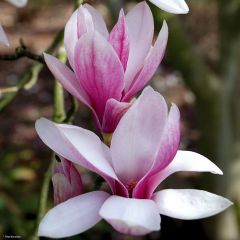
Magnolia x soulangeana
- Flowering time May, June
- Height at maturity 6 m
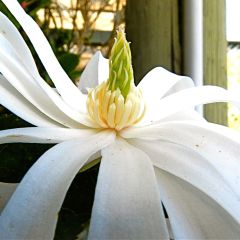
Magnolia stellata Royal Star
- Flowering time April, May
- Height at maturity 4 m
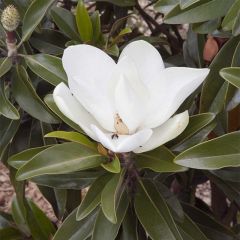
Magnolia grandiflora Alta Tmgh
- Flowering time July to October
- Height at maturity 6,50 m
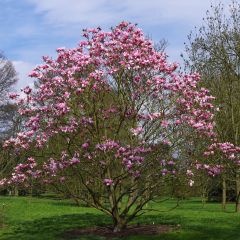
Magnolia Star Wars
- Flowering time April to June
- Height at maturity 4,50 m
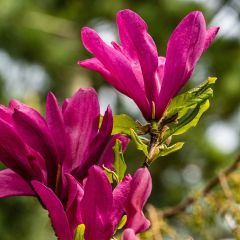
Magnolia Susan
- Flowering time May, June
- Height at maturity 3,50 m
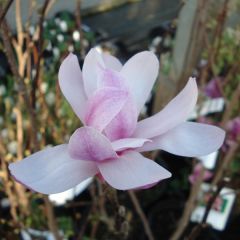
Magnolia x loebneri Leonard Messel
- Flowering time April, May
- Height at maturity 3 m
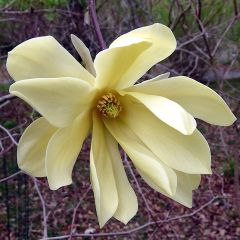
Magnolia stellata Gold Star
- Flowering time May, June
- Height at maturity 3,50 m
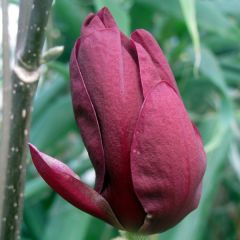
Magnolia Genie
- Flowering time May, June
- Height at maturity 3 m
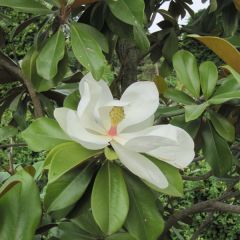
Magnolia grandiflora Galissonière
- Flowering time July to October
- Height at maturity 10 m
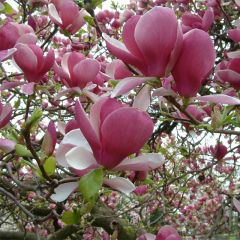
Magnolia soulangeana Rustica Rubra
- Flowering time April, May
- Height at maturity 4,50 m
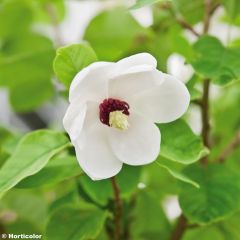
Magnolia sieboldii
- Flowering time June to August
- Height at maturity 5 m
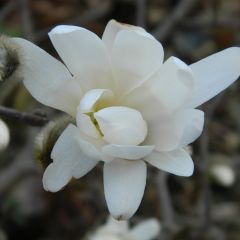
Magnolia denudata Double Diamond
- Flowering time April, May
- Height at maturity 10 m
Discover other Magnolia
View all →Available in 0 sizes
Available in 1 sizes
Available in 1 sizes
Available in 1 sizes
Available in 1 sizes
Available in 1 sizes
Available in 1 sizes
Available in 1 sizes
Available in 2 sizes
Available in 1 sizes
Planting
Where to plant magnolias?
Although magnolias acclimatise in all regions, even cold ones, and generally exhibit a good hardiness down to -20°C, sometimes -25°C, it is advisable in regions with long winters or windy conditions to provide them with a very sheltered spot; late frosts can damage flower buds and leaves, especially in younger plants, which are more fragile.
Magnolias prefer a sunny or partially shaded exposure in a deep soil with a neutral or slightly acidic pH, preferably cool and humus-bearing, not too dry. The Kobé Magnolia and Magnolia grandiflora tolerate slightly calcareous soil. Other species are sensitive to lime.
Magnolias, the quintessential ornamental trees, make a stunning impact in both modest gardens and large parks. Furthermore, their resistance to pollution makes them excellent choices for city gardens.
Evergreen magnolias will thrive isolated in the middle of a short grass meadow, away from the house. Deciduous magnolias, on the other hand, find their place dominating a bed of lower bushes composed of small maples, roses, hibiscus, and prunus.
They are sometimes trained against a warm wall of the house (to the south or west) to protect them from frost, such as the fragile evergreen species from Michelia and Manglietia, like Magnolia ‘Fairy White’ . Or in pots to grow in large containers on a terrace and be stored in a cold greenhouse for winter depending on the climate.
While deciduous magnolias are magnificent in spring, keep in mind that after flowering, they take on a rather unremarkable appearance, so plant them with other plants and bushes that will take over. They do not transplant well; therefore, think carefully about the location before planting.
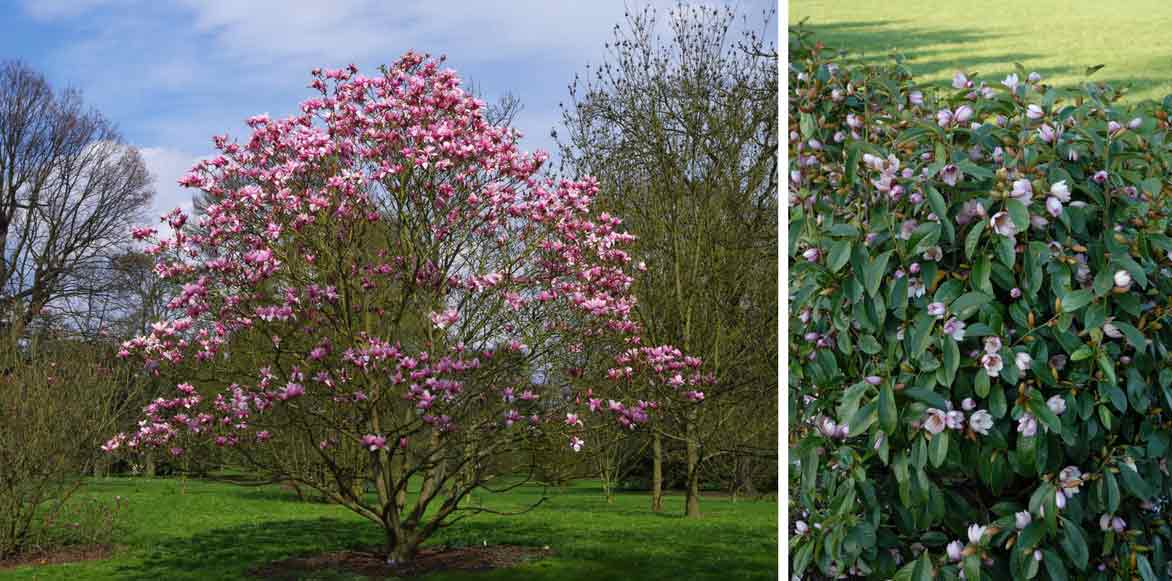
Magnolia ‘Star Wars’ Magnolia ‘Fairy Blush’
When to plant?
Planting the magnolia is ideally done in spring in March-April in cold regions or in early autumn in October in other regions to encourage rooting before winter. However, it can be planted from March to May and from September to November while strictly avoiding frost periods.
How to plant?
Magnolias prefer non-calcareous soil enriched with a good supply of turf. They generally thrive in soil with a neutral to slightly acidic pH (pH of 6 to 7), cool and humus-bearing.
The soil can be slightly moist as long as water does not stagnate. In calcareous soil, be sure to add heather soil.
Plant them in a wide planting hole that is wider than deep, measuring 80 cm x 60 cm with a mixture of half native soil, heather soil, and a good supply of compost. Carefully remove the pot and gently tease out the fragile roots. Space them at least 1.5 m from other plants, and at least 5-6 m apart if planting multiple magnolias.
Plant them at collar level without burying the root ball too deeply. Keep the tree upright and stake it. Firm the soil slightly. Water generously with non-calcareous water (rainwater). Water during hot weather. Mulch the base to retain moisture during summer and protect the roots from cold in winter; pine bark will provide the necessary acidity for magnolias. Finally, once well established, avoid moving them, as their fragile roots do not tolerate transplantation well.
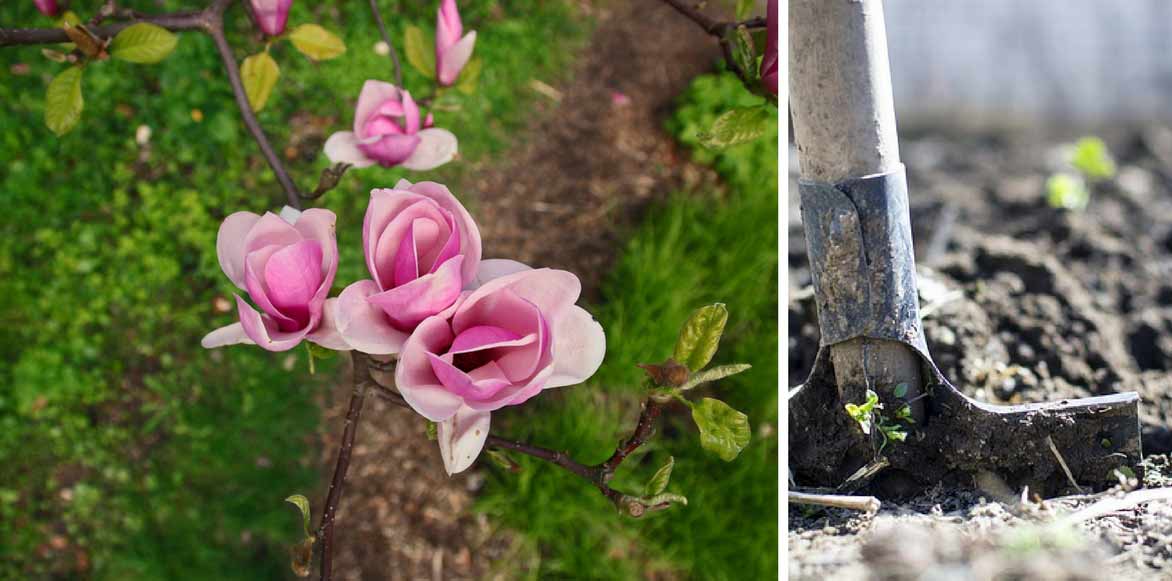 The secret to beautiful magnolias is that the soil is rich, deep, and cool!
The secret to beautiful magnolias is that the soil is rich, deep, and cool!
To learn everything about planting magnolias, discover our practical guide: “Magnolia: how to plant it well in 4 steps”
Read also
Magnolia: when and how to prune?Pruning and care
Magnolias require very little maintenance. In summer, monitor water needs, especially for young trees during their first year after planting (once a week), and water thoroughly during dry spells; the soil should never be dry.
Once a year, in spring or summer, if the foliage is sparse, amend the soil with an organic fertiliser such as ground horn. In autumn, during the first few years, spread a good layer of organic mulch (4-5 cm of pine bark, manure, or leaves) before winter to protect them from the cold and in March, especially on dry soils. If you are concerned about late frosts on budding plants, cover them with a winter fleece.
As magnolias have a naturally harmonious habit, no regular pruning is really necessary. However, if you wish to maintain a beautiful silhouette, each year, after flowering or in autumn, carry out maintenance pruning solely to rebalance the branches or remove crossing branches.
During the first 3 or 4 years following planting, you can perform formative pruning on young bushes to shape their silhouette. To learn everything about pruning Magnolias, follow our advice: “Magnolias: when and how to prune?”
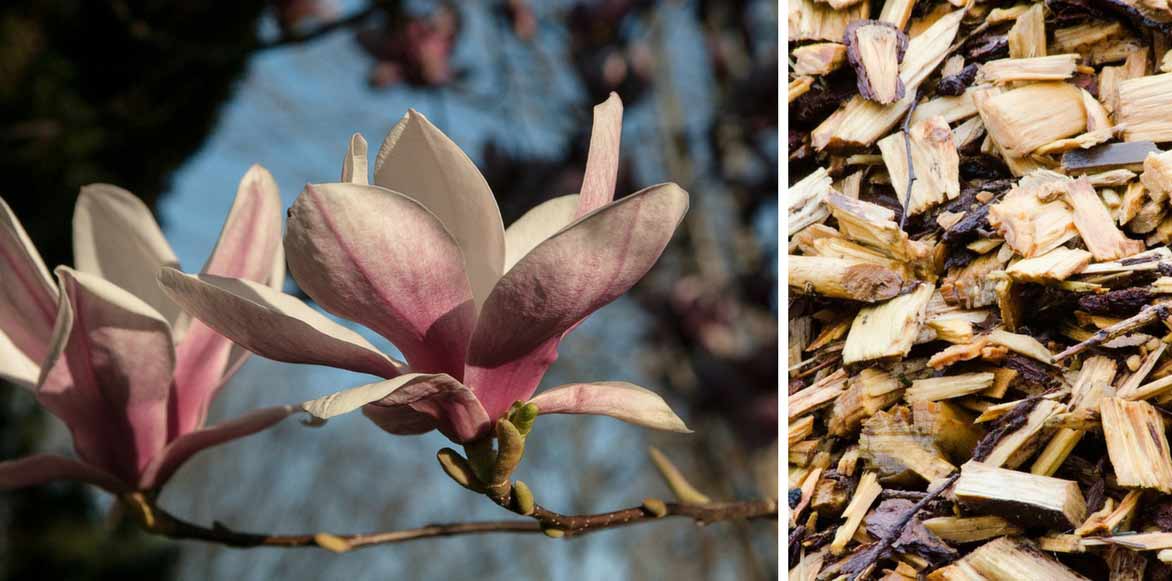
A good mulch and regular watering in summer, that’s the essence of the care needed for magnolias.
Pests and potential diseases
Installed in suitable growing conditions, magnolias are resilient and show little sensitivity to most diseases as well as attacks from insects or parasites. Their notorious enemies are slugs and snails that devour young plants in spring (spread slug pellets) and scale insects.
In waterlogged and poorly drained soil, they will be threatened by diseases caused by devastating fungi such as coral disease, identifiable by its small orange pustules (coral disease, how to prevent it?) and Pestalozzia, which can lead to dieback or even total defoliation of the tree. A well-drained soil regularly amended with ‘heather soil’ fertiliser will help prevent the appearance of the fungus.
Soil that is too calcareous makes the tree vulnerable to diseases, particularly chlorosis, which causes yellowing of the leaves and ultimately leads to the tree’s decline.
→ Learn more about the diseases and pests of Magnolia in our advice sheet!

Coral disease: small orange cushions appear on the branches, twigs, and trunk of the affected magnolia
Propagating
If magnolia can be multiplied by sowing, layering, or grafting, the simplest method is to take semi-woody cuttings. However, be aware that magnolia is one of the most difficult bushes to propagate, with results often being slow and disappointing, and recovery can take several years.
Semi-woody cutting
- Carry out between mid-July and the end of August
- Using pruning shears, take cuttings just below an eye, 15 cm-20 cm long from the current year’s shoots that have a semi-hard base, meaning they are harder and woody
- Remove the leaves from the bottom of the stem and the soft tip of the shoot so that the cutting is 5 to 10 cm long
- Plant the cuttings in a seed tray, spacing them 10 cm apart, or in buckets, in a mixture of river sand and potting soil
- Place under a frame or bell in the shade
- Keep the substrate moist until rooting occurs
- Recovery is slow and can take several years
- Once well-rooted, gently separate the cuttings and repot them individually in pots filled with compost
- Keep protected from frost in winter and transplant in autumn or the following spring
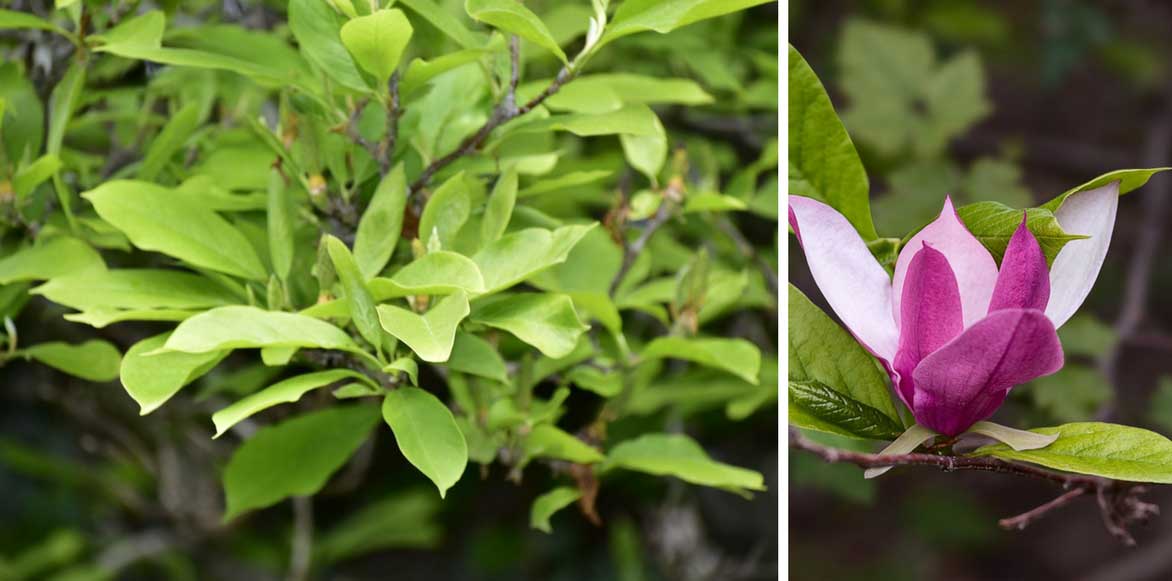
To easily propagate magnolia, take semi-woody cuttings
Associating
Magnolias are the stars of every garden, bringing with their profusion of delicate flowers in spring and summer, light and contrast. Whether elegant or sophisticated, as a striking punctuation in the middle of a short grass meadow, dominating a lower bush mass, or mixed in a hedge, they easily integrate into all settings, whether in modest-sized gardens or in a park. Highly resistant to pollution, they are perfect for urban gardens.
In spring, simply surround them with a carpet of flowers and early-season flowering bulbs, such as pulmonarias, white or cream daffodils, erythroniums, primroses, or early and botanical tulips like ‘Bastogne Parrot’ or ‘David Teniers’.
While deciduous magnolias are stunning in spring, after flowering, they take on a rather unremarkable appearance, so be sure to surround them well! Their foliage in summer limits light at their base, so choose some shade-loving perennials, such as Omphalodes, lady’s mantle, or foxgloves, to accompany them.
They can be paired with other spring-flowering bushes, such as Forsythias, Lilacs, flowering cherries, and Japanese quinces, ornamental apple trees, flowering currants, and with ericaceous plants like Camellias, deciduous Azaleas, Rhododendrons, Hydrangeas, or even shrub Peonies that will take over the flowering within the mass.
They also shine in Japanese-style gardens alongside sacred bamboos, azaleas, or Japanese Maples.
With their purple, white, pink, burgundy, or even yellow flowering, they can be found in fresh, charming scenes. Some can be trained against a wall well exposed to frost protection.
Their flowering is remarkable at the centre of a bush mass composed of Hibiscus, roses, Viburnums, Cornus florida, quinces, forsythias, or even Prunus.
Summer magnolias are accompanied by Buddleias, shrubby cinquefoils, or at the end of the season, a Caramel Tree (Cercidiphylum japonicum) or a Persian Parrotia that will enhance their autumn foliage.
They also make beautiful flowering hedges, either solitary or grouped along a path or at the back of a mass, with viburnums, weigelas, or by alternating cultivars (Magnolia grandiflora, Magnolia denudata, Magnolia soulangeana…).
Slow-growing, medium-sized Magnolias like M. stellata, can also be grown in pots.
→ Discover our advice sheet: Magnolias: 7 association ideas
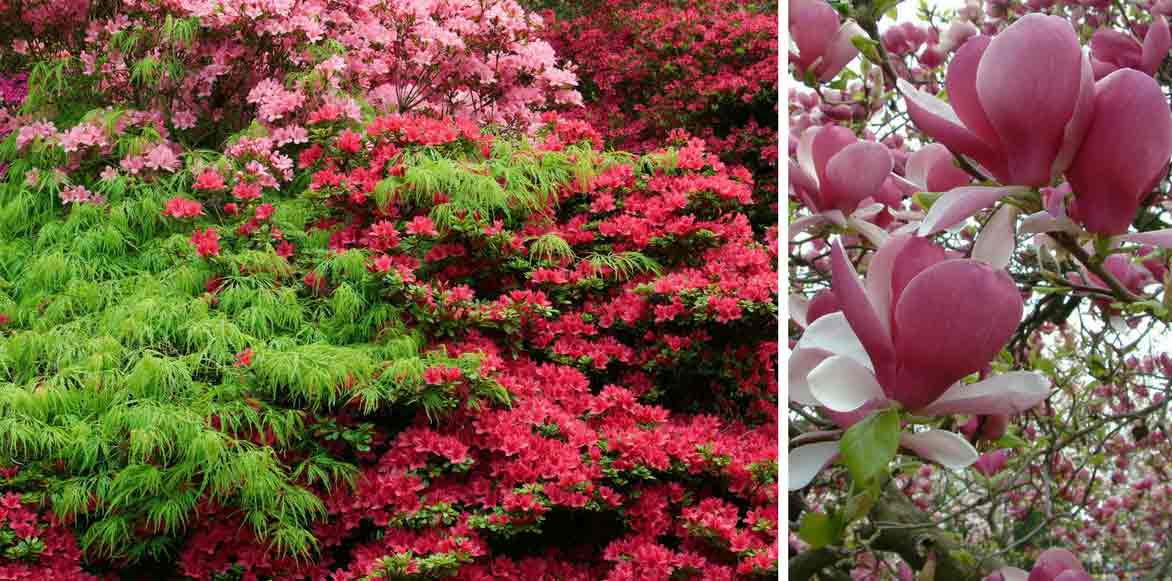
Acer palmatum – Rhododendron Photo Credit GAP Dave Zubraski – Magnolia soulangeana ‘Rustica Rubra’
Useful resources
- The most beautiful collection of magnolias is on our site
- Discover the Beaujoire Floral Park which houses the national reference collection of magnolia
- Advice sheet: What is the best place to plant a magnolia?
- Advice sheet: Magnolia: choosing the variety suited to your garden
- Advice sheet: 10 magnolias with evergreen foliage
- Advice sheets: 10 Magnolias with pink flowers; 7 magnolias with yellow flowers; Magnolias with white flowers; 7 magnolias with fragrant flowering
- Advice sheet: Magnolias: 7 ideas for association
- Advice sheets: 5 Magnolias with star-shaped flowers; 5 Magnolias with large flowers;
- Advice sheets: 5 Magnolias with summer flowering, 5 Magnolias with spring flowering
- Advice sheets: Growing a magnolia in a pot, 7 Magnolias for pots, perfect for brightening up small spaces, 7 Magnolias for small gardens and 7 Majestic Magnolias for large gardens
- To learn about its journey and history, read our article on “the travelling plants: the magnolia”
Frequently asked questions
-
My magnolia isn't flowering, why?
Some magnolias take several years to bloom well. This is most likely a matter of soil nature. The secret to beautiful magnolias is a soil that is rich, deep, and cool. Magnolias prefer slightly acidic soil. Some species of magnolias can tolerate pH levels above 7 but are wary of calcareous soils. Maritime pine bark will provide the acidity that magnolias need and help retain moisture at their base. To acidify the soil, spread a mixture of potting soil, heather soil, and compost around the base. In spring, apply a fertiliser for ericaceous plants and a good leaf mould. In summer, be vigilant and water once a week, never allowing the soil to dry out between waterings.
-
Are the leaves of my magnolia discolouring, is it serious?
Most magnolias are averse to chalky soil. In overly chalky soil, they become more vulnerable to diseases, particularly chlorosis, which causes yellowing of the leaves and ultimately leads to the decline of the tree. Care for the planting with a good supply of turf and leaf mould.
- Subscribe!
- Contents
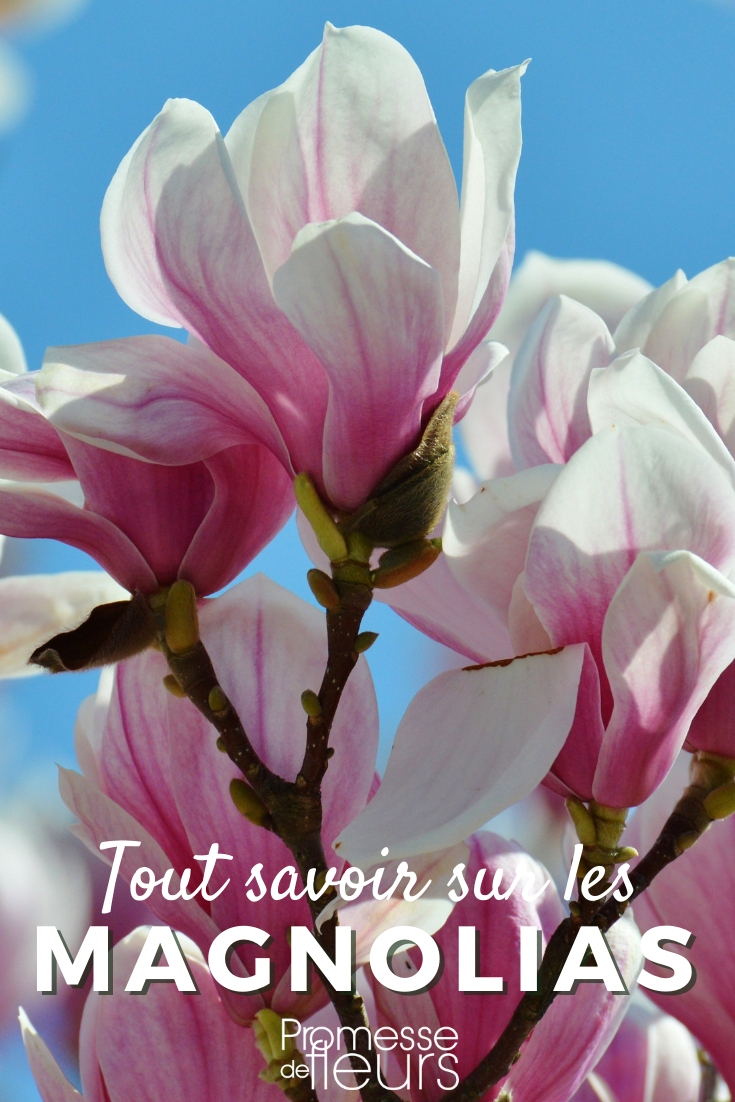































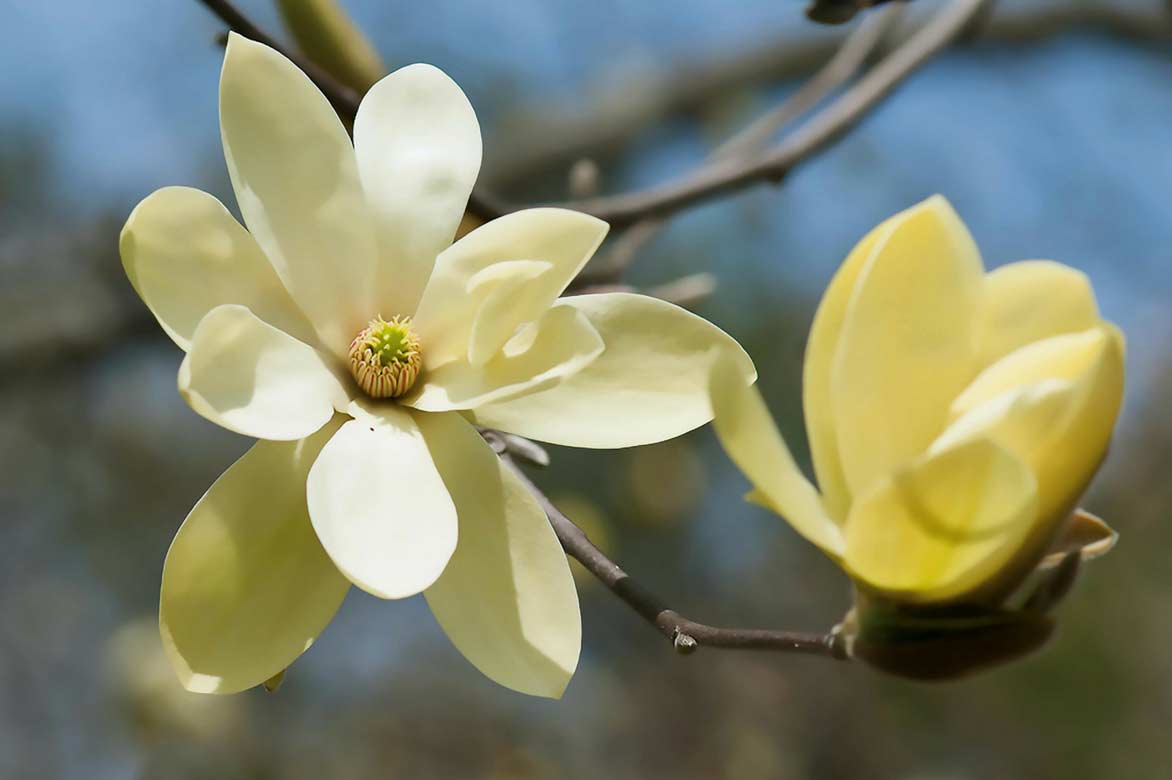
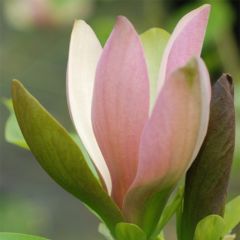


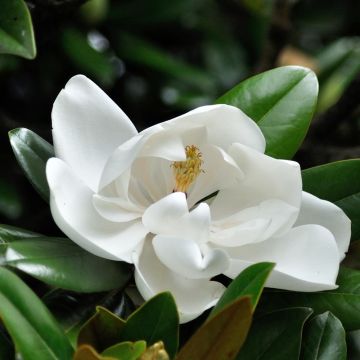
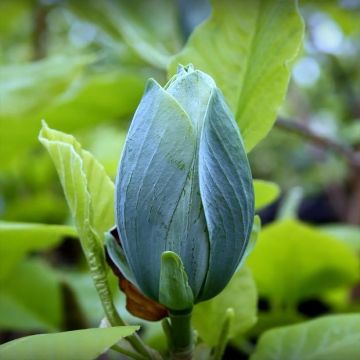
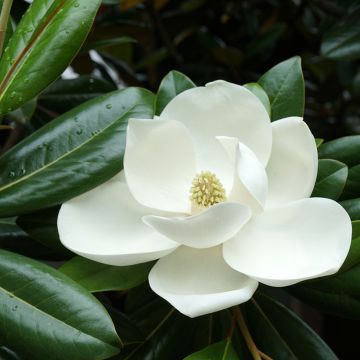

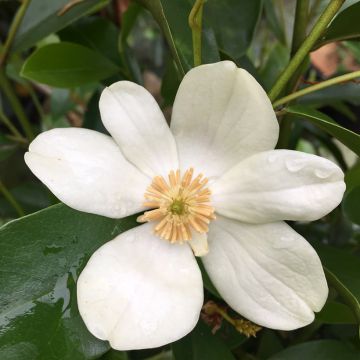
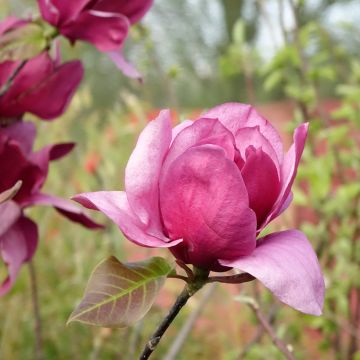
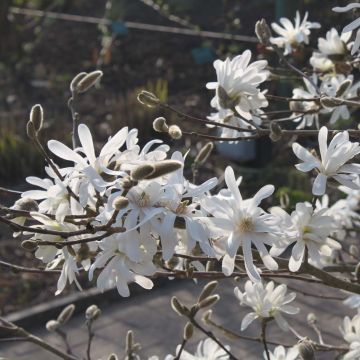
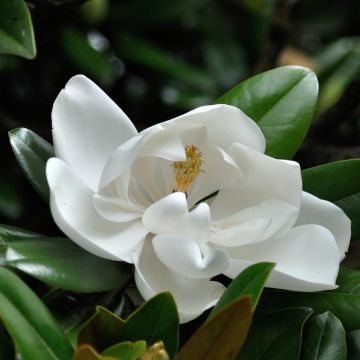
Comments